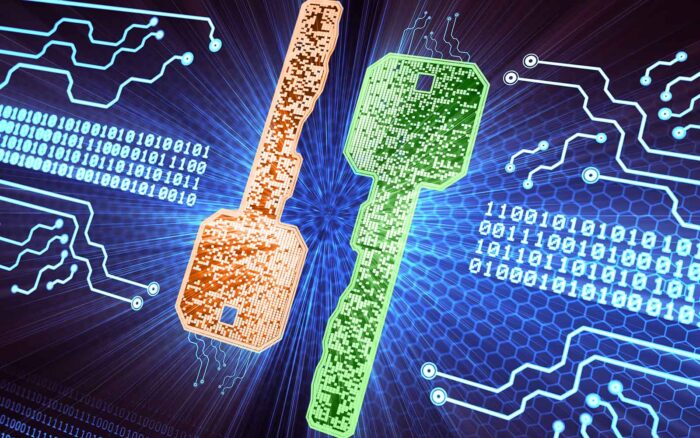
In the dynamic world of cryptocurrencies, Bitcoin stands out as a pioneering and dominant force. With its rise in popularity and value, concerns about security and the potential for theft have grown significantly.
The question of whether Bitcoin can be traced if stolen is complex and multifaceted, requiring a deep dive into the underlying technology, legal frameworks, and the evolving tactics of both thieves and those pursuing them.
Understanding Bitcoin’s Anonymity and Transparency
Bitcoin operates on a blockchain, a decentralized ledger that records all transactions transparently. While this transparency ensures that every transaction is verifiable, it also introduces a unique paradox concerning anonymity.
Bitcoin addresses do not directly reveal the identity of their owners, offering a level of anonymity to users. However, once an address is linked to an individual, all associated transactions can become traceable to that person, challenging the notion of complete anonymity.
The Role of Public and Private Keys

The security of Bitcoin hinges on the cryptographic principles of public and private keys. A public key is visible to everyone and is what you share with others to receive Bitcoin. The private key, however, is meant to be kept secret as it allows the owner to authorize transactions. If a private key is compromised, the security of the Bitcoins it controls is at risk, making it crucial for users to safeguard their private keys against theft.
The Digital Trail of Bitcoin Transactions
Every Bitcoin transaction leaves a digital trail on the blockchain, which is both a strength and a vulnerability. This trail means that if a Bitcoin address is used in illicit activities, such as theft, it’s possible to trace the movement of stolen funds. However, the effectiveness of this traceability depends on the ability to connect the dots between transactions and real-world identities.
Law Enforcement and Blockchain Analysis
Law enforcement agencies and cybersecurity firms have developed sophisticated tools for blockchain analysis. These tools can de-anonymize Bitcoin transactions to some extent by linking them with real-world identities, especially when the transactions interact with regulated exchanges that implement Know Your Customer (KYC) and Anti-Money Laundering (AML) policies.
The Challenge of Bitcoin Mixers
In the quest for enhanced privacy, some turn to services designed to obscure the origins of their Bitcoins. These platforms, often referred to as “bitcoin mixers,” operate by pooling and scrambling cryptocurrencies from numerous sources. This process complicates the traceability of individual coins, posing a significant hurdle for those attempting to track stolen funds.
The Impact of Decentralized Exchanges

Decentralized exchanges (DEXs) offer a platform for trading cryptocurrencies without the need for a centralized authority. While DEXs promote privacy and autonomy, they also present challenges for tracing stolen Bitcoin, as they can facilitate the exchange of stolen funds without requiring personal identification from their users.
The Role of Cryptocurrency Regulation
The regulatory environment for cryptocurrencies is continually evolving, with many jurisdictions implementing regulations that impact the traceability of stolen Bitcoin. These regulations often require exchanges to implement KYC and AML policies, which can assist in tracing stolen funds by linking transactions to real identities.
The Use of Forensic Analysis
Forensic analysis in the context of Bitcoin theft involves scrutinizing the blockchain for patterns and clues that can lead to the identification of thieves. This analysis can reveal the flow of stolen funds, potentially leading to the recovery of assets and the prosecution of criminals.
The Limitations of Traceability
Despite the advancements in technology and regulatory measures, the traceability of stolen Bitcoin has its limitations. The anonymity features of Bitcoin, combined with the use of mixers and the complexity of the blockchain, can make it challenging to trace stolen funds conclusively.
The Future of Bitcoin Security
As the Bitcoin ecosystem continues to mature, so do the measures for enhancing security and traceability. Innovations in blockchain analysis, along with increased cooperation between cryptocurrency platforms and law enforcement, are improving the chances of recovering stolen Bitcoin. However, the arms race between thieves and those pursuing them remains ongoing, with each side continually adapting their tactics.
Personal Responsibility and Best Practices
At the individual level, the responsibility for securing Bitcoin lies with the user. Employing best practices such as using hardware wallets for storing private keys, enabling two-factor authentication, and being cautious with online transactions can significantly reduce the risk of theft.
Case Studies and Real-World Examples

High-profile cryptocurrency thefts, like the Mt. Gox exchange hack in 2014 with 850,000 Bitcoins lost, and the Bitfinex hack in 2016 with 120,000 Bitcoins stolen, highlight the challenges in tracing and recovering stolen digital assets.
These incidents reveal the vulnerabilities of crypto exchanges and the intricate efforts required to track down the culprits using blockchain analysis. Each case serves as a crucial learning point, illustrating both the sophisticated methods employed by cybercriminals and the relentless pursuit by cybersecurity experts and law enforcement to recover lost funds and enhance digital asset security.
International Cooperation in Fighting Crypto Crime
The global nature of cryptocurrency crime demands international cooperation for effective resolution. Organizations like Europol and Interpol play key roles in fostering collaboration among countries to combat crypto-related offenses.
Notable successes, such as the Silk Road takedown, demonstrate the potential of combined efforts across borders, leveraging shared intelligence and resources. This cooperative approach is essential for tracing Bitcoin transactions that span multiple jurisdictions, showcasing the importance of synchronized legal and technical frameworks in the fight against digital asset theft.

Closing Thoughts
The question of whether stolen Bitcoin can be traced is nuanced, involving various technical, legal, and practical considerations. While the blockchain provides a level of transparency that can aid in tracing transactions, the anonymity features of Bitcoin and the use of services that obscure transaction origins present significant challenges.
The ongoing development of regulatory frameworks, forensic analysis techniques, and security measures offers hope for enhancing the traceability of stolen Bitcoin. However, the dynamic nature of the cryptocurrency landscape means that vigilance and adaptation are paramount for both individuals and institutions within the space.








